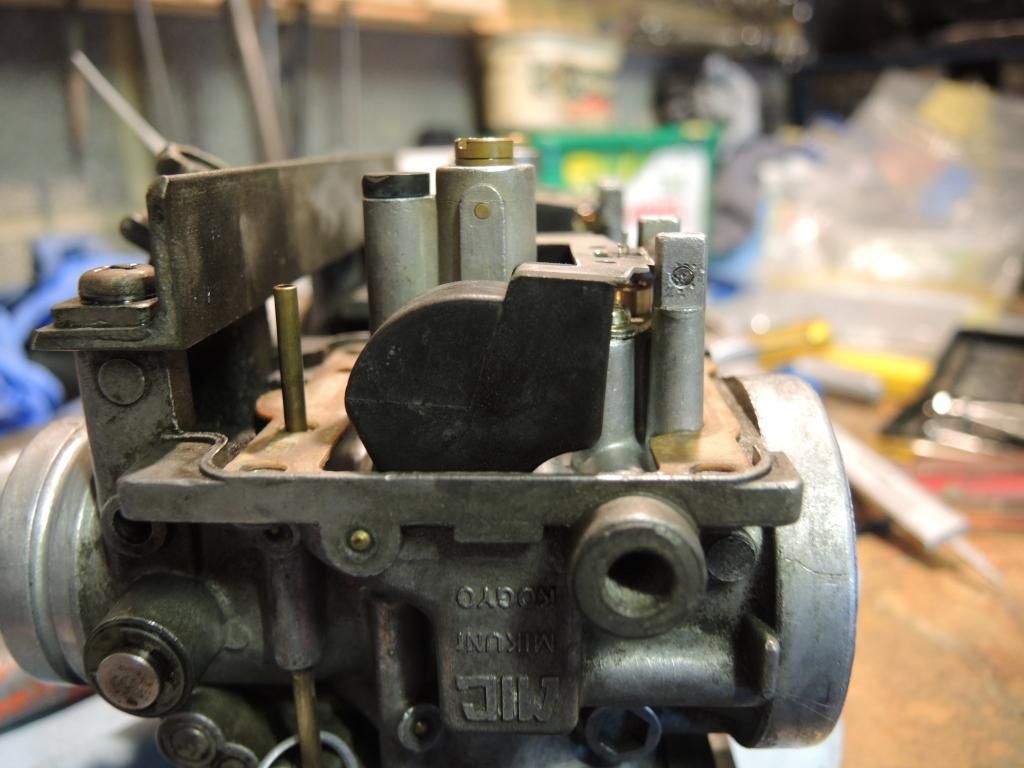Fentible
XS400 Enthusiast
Hi
After seemingly getting this 1980 XS400 running well, its now struggling to get over 4000 rpm under load but will rev cleanly on the stand. It starts easily and ticks over beautifully, in riding it accelerates nicely up to the 4K point after which it starts to stutter and miss. Plugs indicate a lean (ish) mixture on the R/H side and a rich mixture on the left. I would have put it down to fuel starvation but the fuel is flowing nicely via the vacuum tap.
Points gapped as per manual, timing set as per manual, valves adjusted and set. New float and needle valves, float (rubber) height set at 23mm and using the clear plastic hose method on the drain bowl stub gives a fuel level roughly consistent with the join between float bowl and carb. ATU is free and working, carbs have been thoroughly cleaned and are as per factory spec in terms of needle heights and jets. Additionally the carbs have been balanced using vacuum gauges
Ive worked my way through the hints and tips on a previous link but am at a loss as to where to go next. Still feels like fuel starvation, running on prime makes minimal difference. I did have an external filter fitted which I removed and replaced with straight hose, to no avail.
Thoughts, previous experience??
Cheers
fent
After seemingly getting this 1980 XS400 running well, its now struggling to get over 4000 rpm under load but will rev cleanly on the stand. It starts easily and ticks over beautifully, in riding it accelerates nicely up to the 4K point after which it starts to stutter and miss. Plugs indicate a lean (ish) mixture on the R/H side and a rich mixture on the left. I would have put it down to fuel starvation but the fuel is flowing nicely via the vacuum tap.
Points gapped as per manual, timing set as per manual, valves adjusted and set. New float and needle valves, float (rubber) height set at 23mm and using the clear plastic hose method on the drain bowl stub gives a fuel level roughly consistent with the join between float bowl and carb. ATU is free and working, carbs have been thoroughly cleaned and are as per factory spec in terms of needle heights and jets. Additionally the carbs have been balanced using vacuum gauges
Ive worked my way through the hints and tips on a previous link but am at a loss as to where to go next. Still feels like fuel starvation, running on prime makes minimal difference. I did have an external filter fitted which I removed and replaced with straight hose, to no avail.
Thoughts, previous experience??
Cheers
fent


